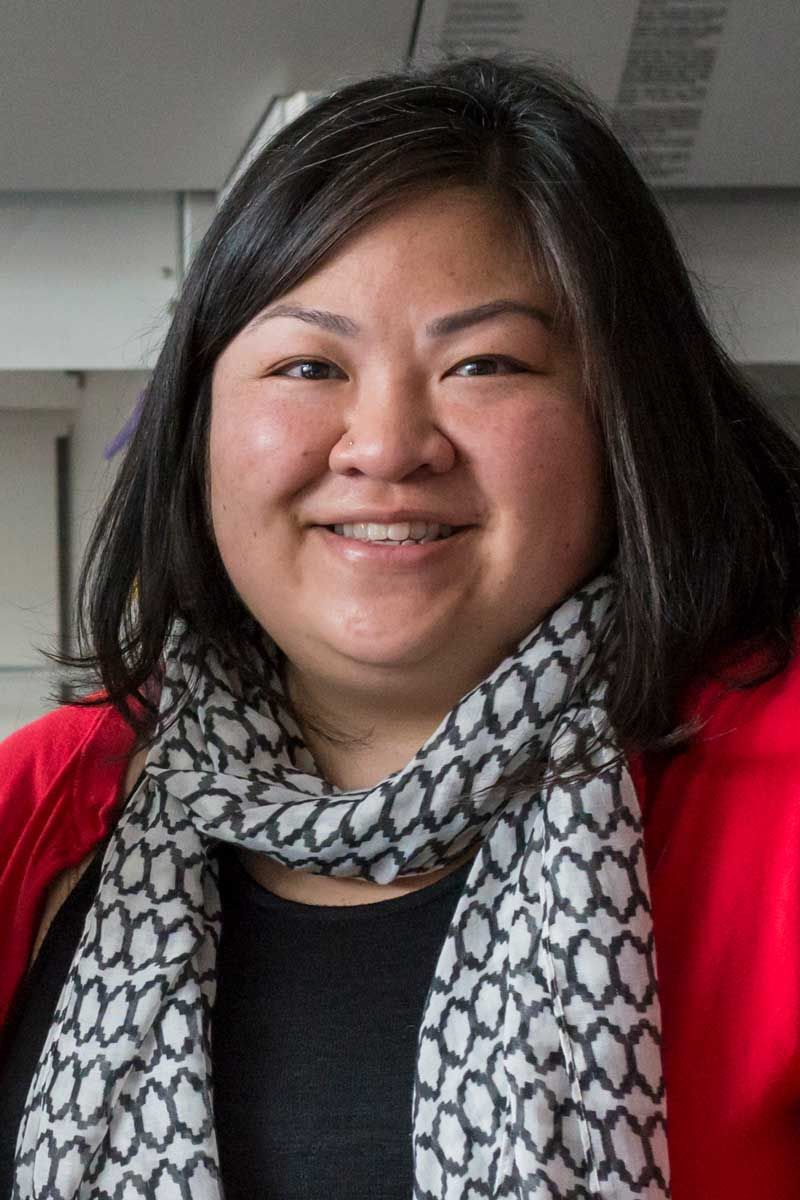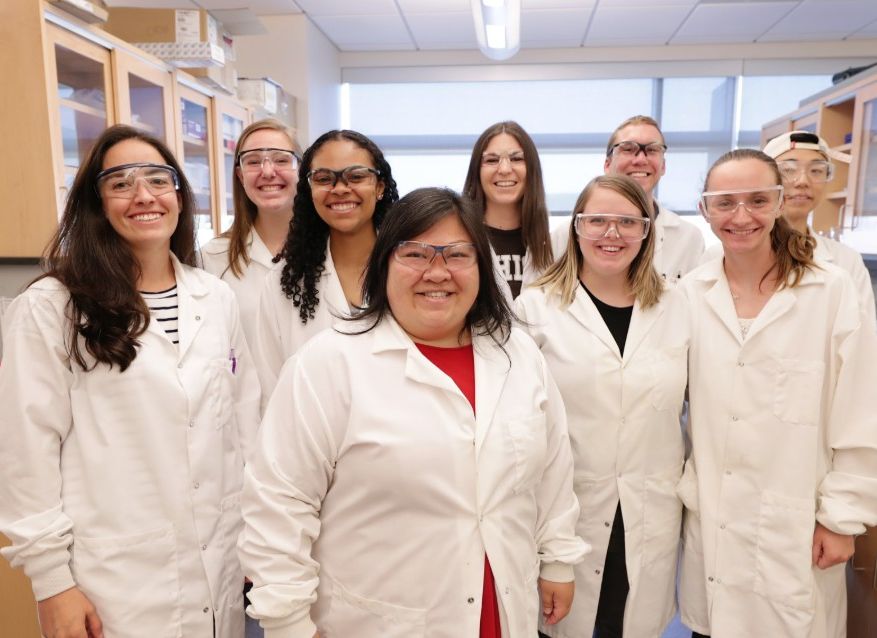If you’re able to walk without pain, give a silent shout-out to your cartilage.
Every time you take a step, this flexible tissue absorbs the load and transfers it to the bone, allowing you to move freely. But unlike bone, if cartilage gets damaged—by injury, wear and tear, or inflammation—it can’t regenerate. Over time, the damaged tissue degrades, and walking becomes progressively more painful as the bones come in contact with each other.
“Eventually, you’ll develop osteoarthritis, which is the most common form of arthritis and affects approximately 31 million Americans,” says Lesley Chow, an assistant professor of bioengineering and materials science and engineering at Lehigh University’s P.C. Rossin College of Engineering and Applied Science. “And while there are some surgical interventions, you eventually hit a point where you’re in so much pain and have such a loss of mobility that you need a total knee replacement.”
Effective interventions don’t yet exist because cartilage is so difficult to reproduce synthetically. Any new tissue that does form doesn’t have the same properties as native cartilage and does not integrate well with the underlying bone it is supposed to protect. But if a biomaterial could be developed that successfully directed regeneration of the entire osteochondral (“osteo” for bone, “chondral” for cartilage) tissue, cartilage injuries could be treated earlier and degeneration could be slowed or halted altogether.
“If we can intervene when you first have that injury, this therapy would have the potential to buy you 10 or more years, or maybe you’d never need a knee replacement,” says Chow. “That’s the dream.”
For Chow, it’s a dream that got one step closer to reality when she received a Faculty Early Career Development Program (CAREER) award from the National Science Foundation. The award supports work she and her team are doing to develop a biomaterial that promotes regeneration of the complex osteochondral tissue interface. Specifically, refining their 3D-printed material to provide the exact signals to cells that enable the formation of tissue organized in the same way as natural tissue.
CAREER grants are considered one of the more prestigious recognitions given by the NSF. They are awarded annually in support of junior faculty members across the U.S. who exemplify the role of teacher-scholars through outstanding research, excellent education, and the integration of education and research. Each award provides stable support at the level of approximately $500,000 for a five-year period.
“We know that we have cells within our body that are capable of regrowing these tissues, but what if we aren’t giving them the right cues?” says Chow. “We think a lot about the chemical and physical cues we offer to cells. What we’d like to be able to do, for example, is change the chemistry of our biomaterial while retaining the same mechanical property. This is very difficult to do because these properties are inherently tied to each other. My lab has developed a platform where we can change these cues independently of each other.”
The effort to regenerate osteochondral tissue via biomaterials isn’t new. There are countless ways researchers have done it, says Chow. But it’s not clear exactly how the materials work, so well-defined design rules are elusive. For example, researchers can’t say what specific mechanical property or porosity is required, or what biochemical cue must be delivered to achieve a specific cell response. Chow wants to establish a set of design criteria to eliminate the guesswork.
The team’s 3D-printed scaffolds have already yielded promising results. Prior to printing, they synthesize peptides—short segments of proteins—to either promote bone or cartilage formation. They attach these peptides to biodegradable polymers and add the resulting peptide-polymer conjugates at a desired concentration during 3D printing to fabricate a peptide-functionalized material.
“It’s like a color printer,” says Chow. “Say you want to print your bone-promoting scaffold first and then you want to transition to your cartilage promoting. You just switch your printer heads. It’s like switching colors. So within the same print, you end up with one biomaterial that has both bone- and cartilage-promoting peptides in one continuous scaffold.”
The polymers Chow is working with can also have different molecular weights, meaning they can be short or long chains. Using different molecular weights allows them to present the same chemistry (because the short and long chains are made from the same polymer) but exhibit different mechanical properties (the longer chain will result in a stiffer material).
“My hypothesis would be that a stiffer material would drive the cells to produce bone and a softer material will drive cells to produce cartilage,” says Chow. “Cells can feel their environment, and they respond to different stiffnesses in different ways. So what we’re trying to do is make materials where we can independently control these properties to find out how cells respond to these subsets of materials. So change the chemistry but don’t change the mechanical properties or architecture, change the architecture but don’t change the mechanical properties, or change the mechanical properties but don’t change anything else.”
The award will help Chow and her team better understand how cells respond to their platform so they can fine-tune it. Their work focuses on making the “optimal material” that elicits a response that yields both bone and cartilage tissue. The ultimate goal, however, is twofold: a biodegradable implant that could be inserted after injury to ward off or delay future tissue degeneration and debilitating pain, and a fundamental understanding that can be translated to other cell types, such as skin cells, for better treatments for people like burn victims.
“We want this to be a springboard for those interested in other tissue systems,” says Chow, who is affiliated with Lehigh’s Institute for Functional Materials and Devices (I-FMD). “People who want to better understand the properties they need to develop in their own materials to regenerate other tissues of interest.”
About Lesley W. Chow
Lesley W. Chow joined Lehigh following her postdoctoral training at Imperial College London and PhD at Northwestern University. Her research interests focus on the design of novel biomaterials for tissue engineering and regenerative medicine applications. Building on her previous experience with supramolecular design and biomaterial fabrication, the Chow Lab combines different materials and advanced fabrication techniques to generate scaffolds with architectures and spatially organized functionality that resemble native biological tissues. Chow is particularly interested in utilizing 3-D printing and self-assembly approaches to organize synthetic polymers, natural biopolymers, and peptides into hierarchical structures and compositions. These scaffolds serve as platforms to deepen understanding about how native tissue organization affects cell and tissue function across length scales and improve clinical translation of biomaterials.
The Chow Lab is currently focused on approaches to improve regeneration of musculoskeletal tissue interfaces, such as the osteochondral interface between bone and cartilage. Recreating these complex interfaces poses a significant engineering challenge as native tissues possess gradients in biochemical, structural, and mechanical properties that are critical for normal biomechanical function. Her team is developing biomaterials-based strategies to guide spatial cell behavior and tissue formation to engineer tissues that mimic these structure-function-property relationships.


